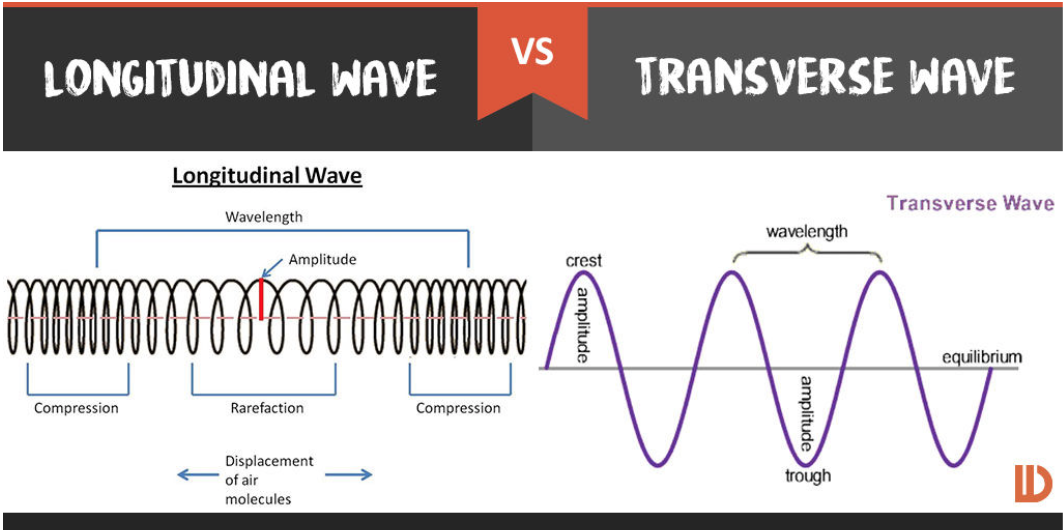10.1 Properties of Waves
As of 2021, the College Board focuses only on Units 1-7 in the AP Physics 1 exam. However, this content on wave properties remains a valuable resource for understanding fundamental physics concepts.
Enduring Understanding 6.A 💻
A wave is a traveling disturbance that transfers energy and momentum.
Essential Knowledge 6.A.1 🏡
Waves can propagate via different oscillation modes, such as transverse and longitudinal.
Essential Knowledge 6.A.2 🏡
Mechanical waves require a medium for propagation.
Essential Knowledge 6.A.3 🏡
The amplitude represents the maximum displacement of a wave from its equilibrium value.
Essential Knowledge 6.A.4 🏡
The energy carried by a wave increases with amplitude. For example, sound waves with greater amplitudes carry more energy.
Anatomy of a Wave
A wave is a periodic disturbance, repeating in a predictable pattern. The disturbance causes particles in the medium to oscillate either:
Parallel to the wave’s motion (“Longitudinal waves”).
Perpendicular to the wave’s motion (“Transverse waves”).

Key Features of Waves:
Amplitude:
The height of the wave, measured from the equilibrium position.
Indicates the amount of energy the wave transfers—higher amplitudes signify greater energy.
Wavelength:
The distance between repeating points of the wave.
For longitudinal waves: Compression to compression or rarefaction to rarefaction.
For transverse waves: Crest to crest or trough to trough.
Period:
The time it takes for one cycle of the wave to occur.
Frequency:
The number of wave cycles in a given time, measured in Hertz (Hz).
Velocity of a Wave
The speed of a wave depends on the medium it travels through. Mechanical waves require a medium (e.g., air, water, or a rope) and cannot propagate through a vacuum. In general:
Waves travel faster in denser materials or materials with higher tension.
Wave Velocity Equation:
For waves:
Inverse Relationship:
If the wave’s velocity remains constant, the wavelength and frequency are inversely proportional:
Lower frequency = Larger wavelength.
Higher frequency = Smaller wavelength.
Practical Applications
The PhET Waves on a String simulation provides an interactive way to experiment with these properties. Adjusting the medium’s density or tension illustrates how wave velocity and energy change.
Sample Problem (AP Classroom)
Problem:
A transverse wave travels to the right along a string. Two dots, P and Q, are painted on the string. At an instant:
Dot P has maximum displacement.
Dot Q has zero displacement.
Tasks:
Indicate the instantaneous velocity and acceleration of P and Q.
Draw the string’s position after a time interval of , where is the period.
Determine the total distance traveled by dot P in one period.
Solution:
Velocity and Acceleration:
Dot P: At maximum displacement, velocity = 0; acceleration is maximum (toward equilibrium).
Dot Q: At equilibrium, velocity is maximum; acceleration = 0.
String Position at:
Shift each point of the wave by 1/4 of the cycle to the right.
Point P remains stationary since waves transfer energy, not mass.
Distance Traveled by Dot P:
In one period, dot P oscillates from maximum displacement (+A) to −A and back, covering:
Key Takeaways
Waves transfer energy and momentum without transporting mass.
The wave’s properties, such as amplitude, wavelength, frequency, and velocity, are interrelated.
Understanding these properties is critical for applications in physics, engineering, and acoustics.







